Western Australian A native element and precious metal, gold has long been prized for its beauty, resistance to chemical attack and malleability. Found as a native element, it has been used by mankind for thousands of years. Gold is used as a standard for international currency and is also widely used in jewelry, electronics (where its superb properties as a conductor help offset its tremendous cost), dentistry and in photographic processes. Gold is generally found as disseminated grains in quartz veins with pyrite and other sulphides, or as rounded grains, flakes or nuggets in placer deposits and in streams and rivers. Gold is often panned from such deposits by taking advantage of its high density to wash away the lighter sediments from a pan or sluice. The Australian Outback is rich with the stories of prospectors and their discoveries of distinctive specimens. So too, with this example, which was found by a prospector, using a metal detector, under only a few feet of soil. After an unsuccessful day’s labor in the hot sun, he had all but given up hope of finding anything. Then suddenly, in a desert canyon he rarely explored, he discovered this superb gold-in-quartz specimen late in the afternoon just prior to returning to camp. A superb, very three dimensional specimen, with buttery yellow colored gold, contrasting against the glistening white quartz still embedded. A very sculptural piece with some crystallization visible, and some molten surfaces. These specimens are becoming increasingly rare as over the years so many gold-in-quartz specimens have been destroyed for extraction of their gold content for sale purposes. Measuring 5 x 2½ x 2½in Total gross weight approximately 21.860 ozt (23.985oz), 679.9g
Western Australian A native element and precious metal, gold has long been prized for its beauty, resistance to chemical attack and malleability. Found as a native element, it has been used by mankind for thousands of years. Gold is used as a standard for international currency and is also widely used in jewelry, electronics (where its superb properties as a conductor help offset its tremendous cost), dentistry and in photographic processes. Gold is generally found as disseminated grains in quartz veins with pyrite and other sulphides, or as rounded grains, flakes or nuggets in placer deposits and in streams and rivers. Gold is often panned from such deposits by taking advantage of its high density to wash away the lighter sediments from a pan or sluice. The Australian Outback is rich with the stories of prospectors and their discoveries of distinctive specimens. So too, with this example, which was found by a prospector, using a metal detector, under only a few feet of soil. After an unsuccessful day’s labor in the hot sun, he had all but given up hope of finding anything. Then suddenly, in a desert canyon he rarely explored, he discovered this superb gold-in-quartz specimen late in the afternoon just prior to returning to camp. A superb, very three dimensional specimen, with buttery yellow colored gold, contrasting against the glistening white quartz still embedded. A very sculptural piece with some crystallization visible, and some molten surfaces. These specimens are becoming increasingly rare as over the years so many gold-in-quartz specimens have been destroyed for extraction of their gold content for sale purposes. Measuring 5 x 2½ x 2½in Total gross weight approximately 21.860 ozt (23.985oz), 679.9g


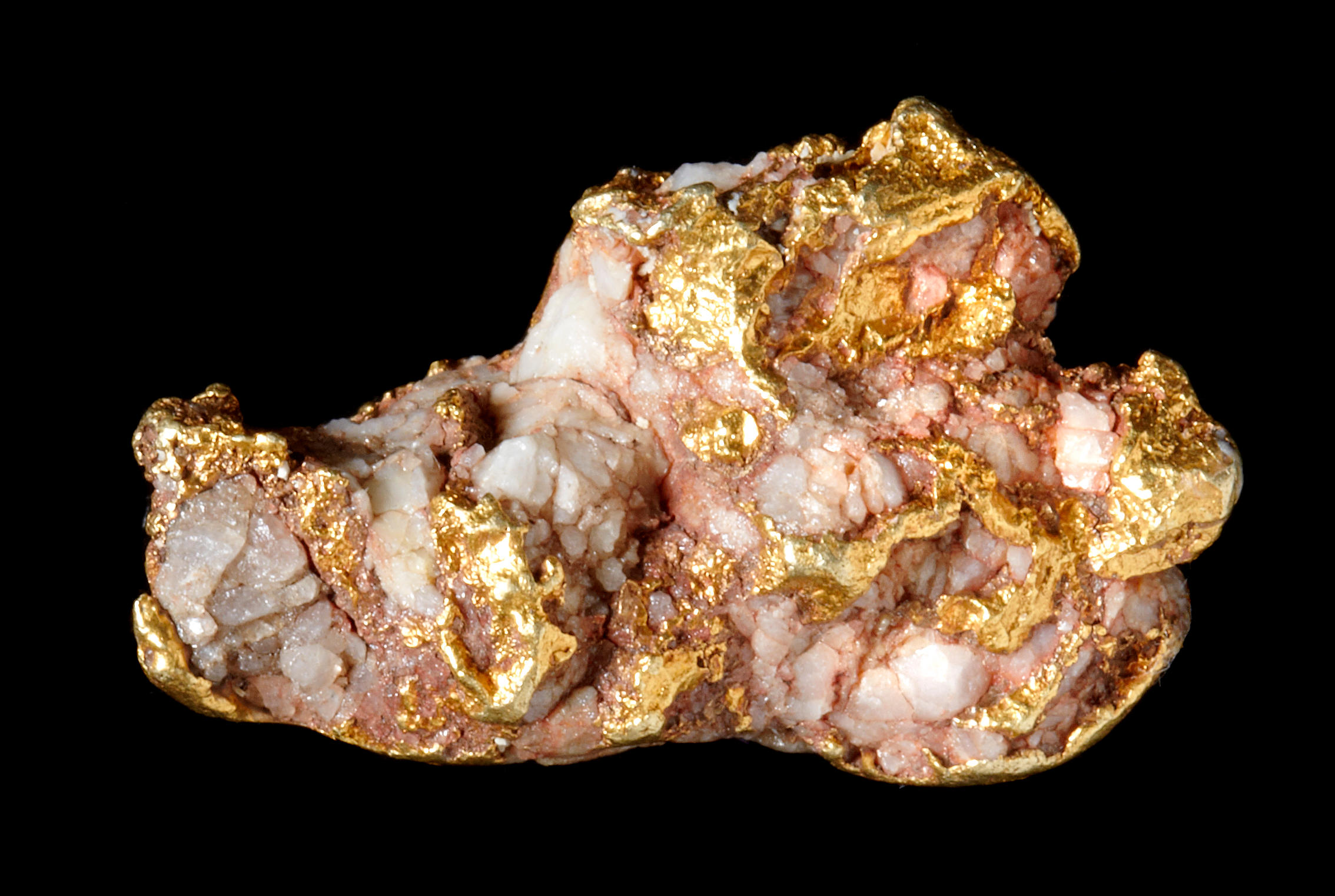
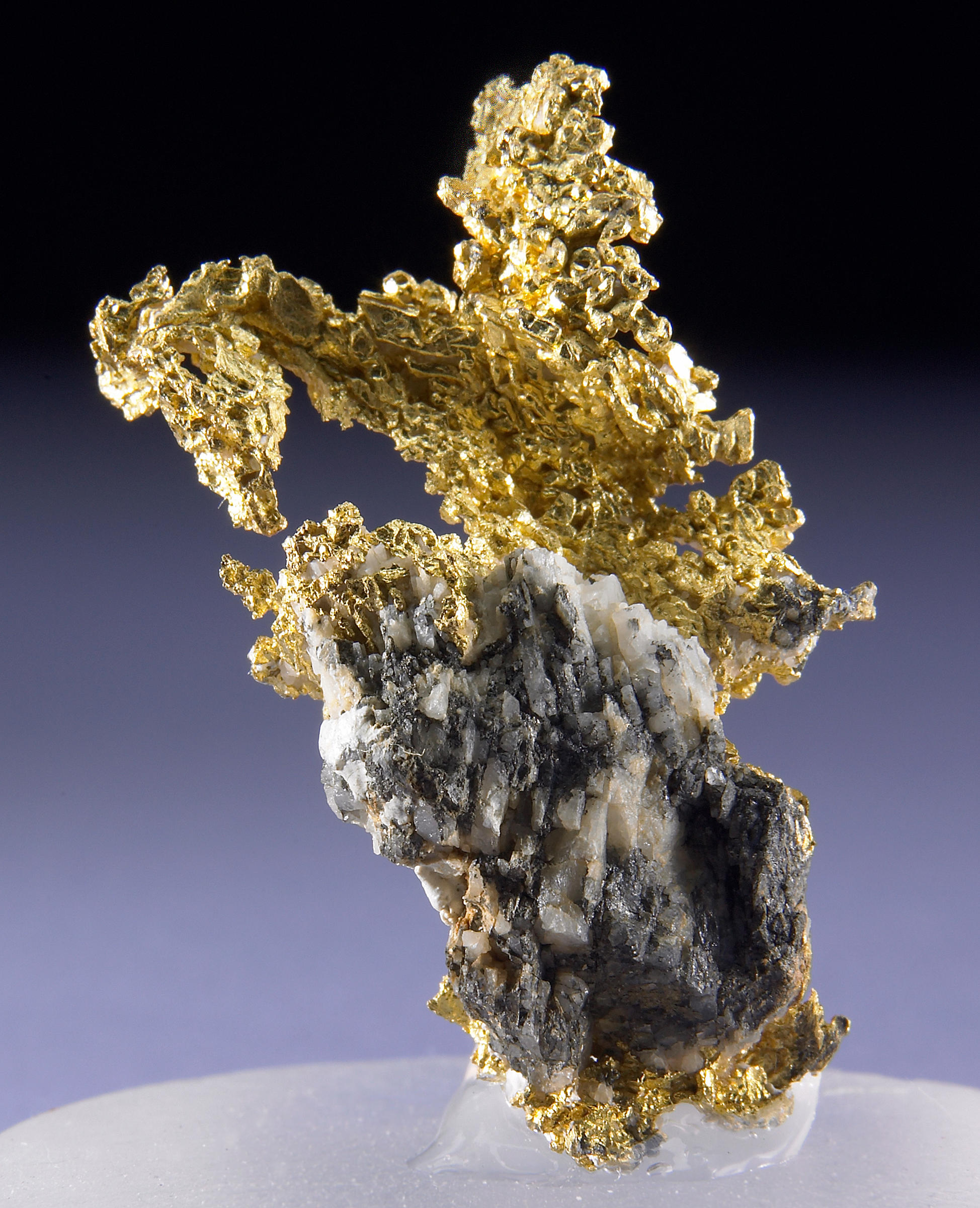
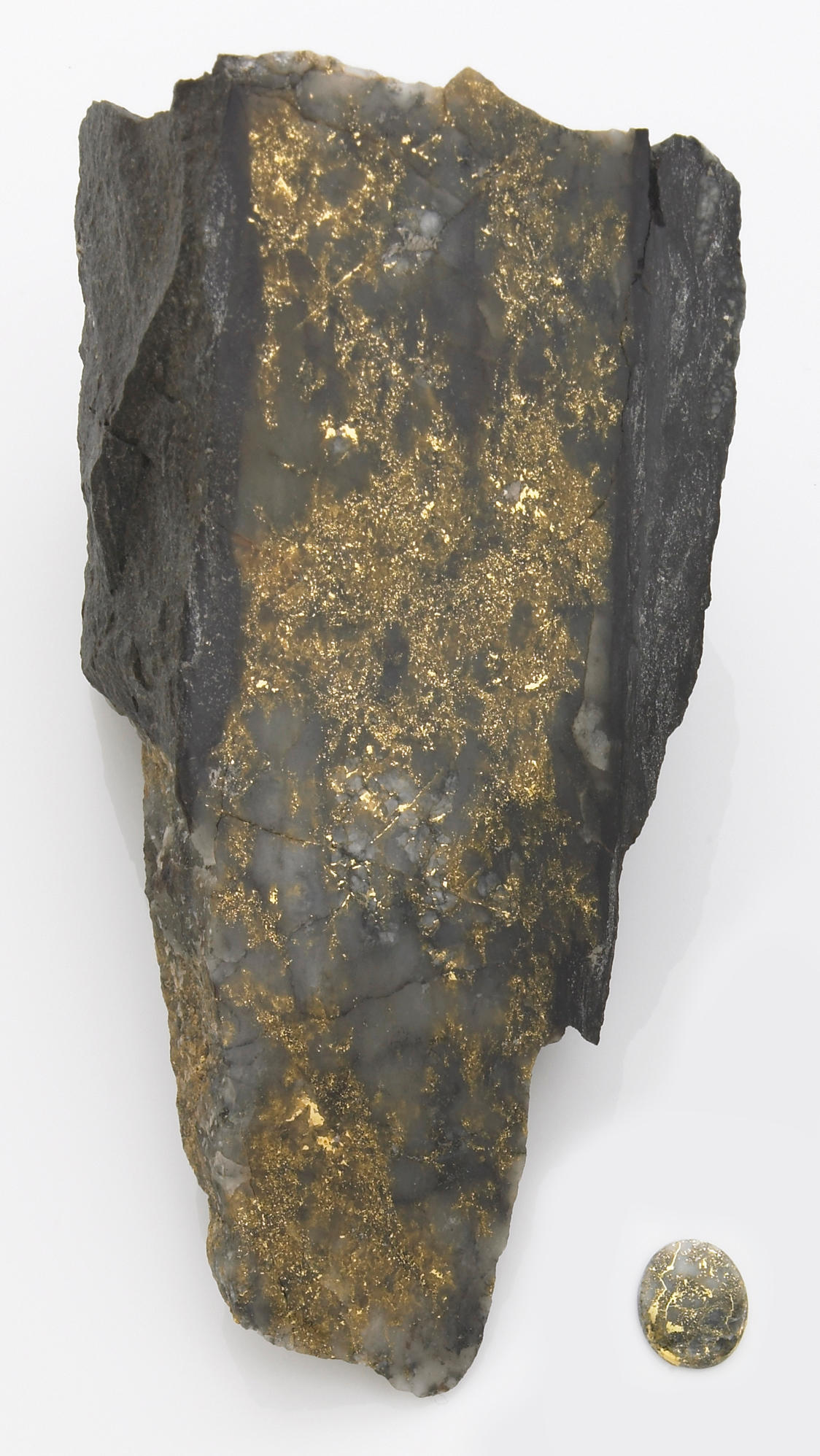
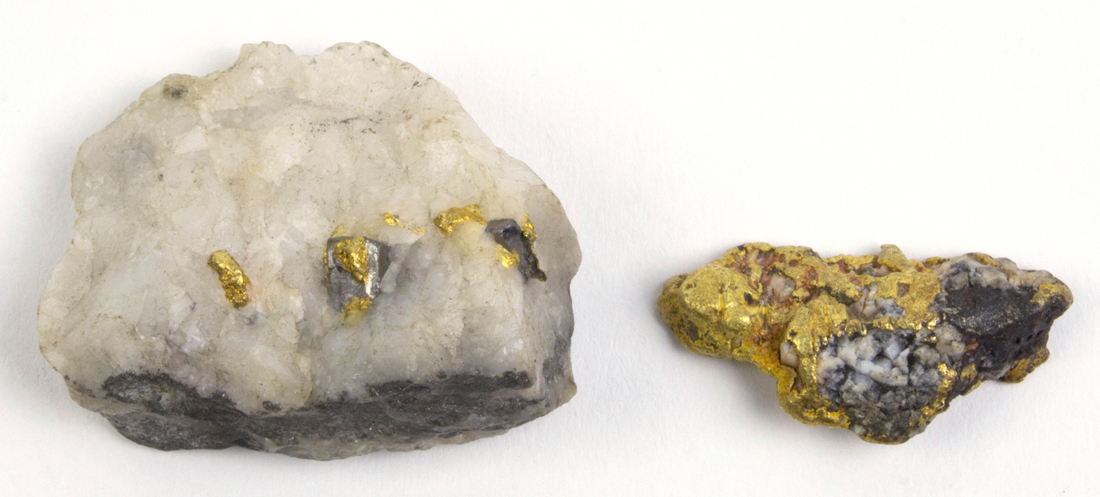
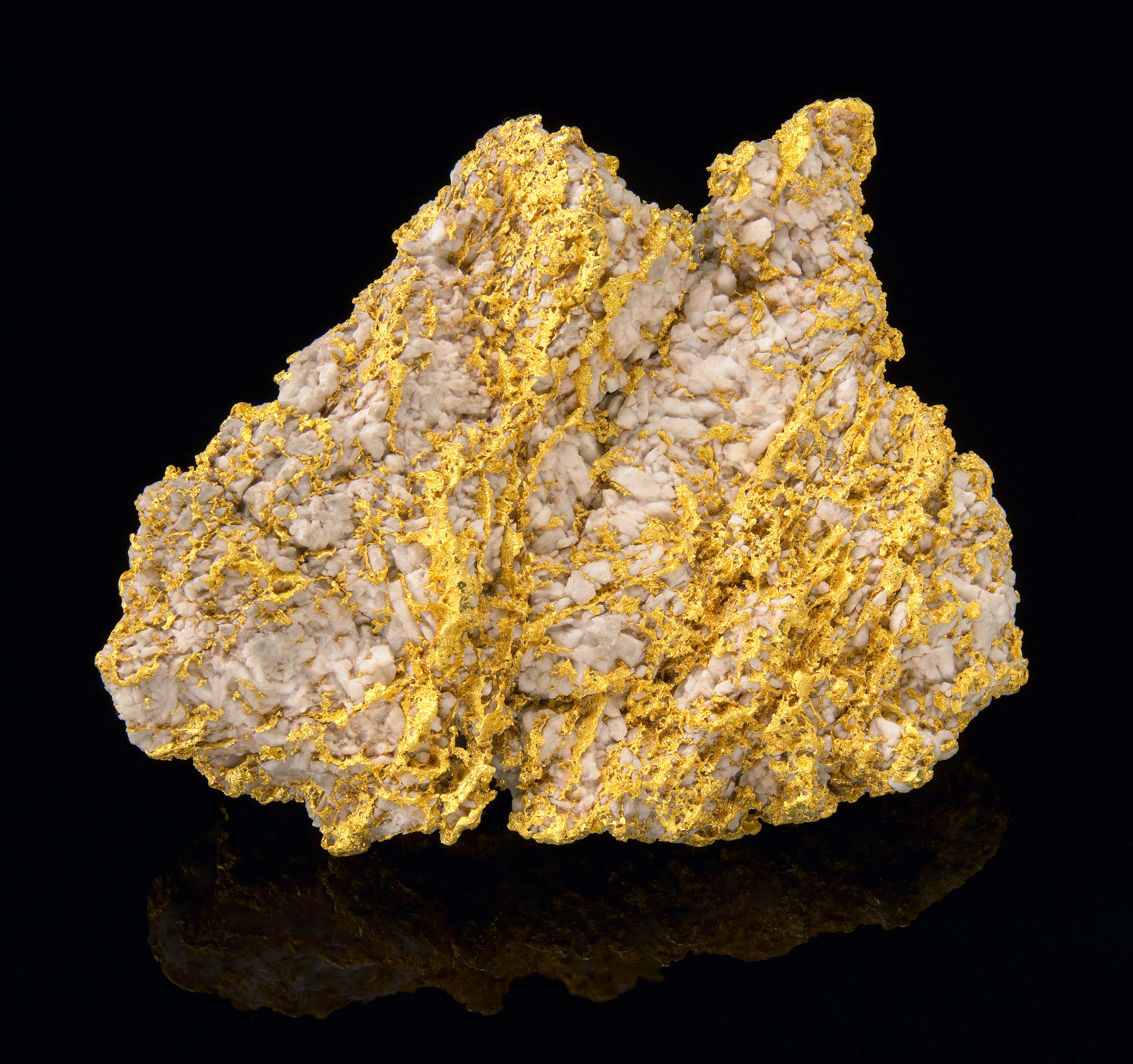
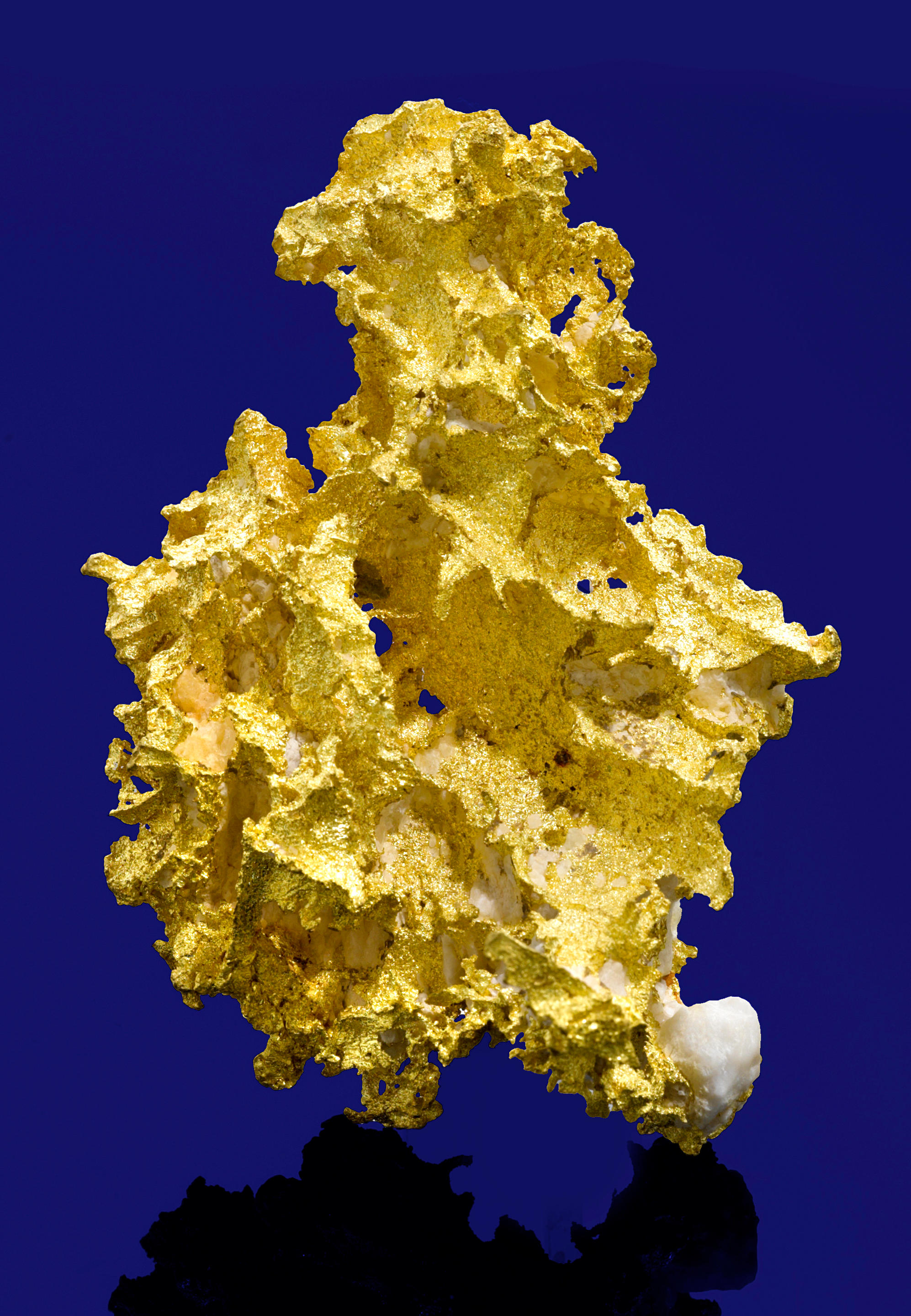

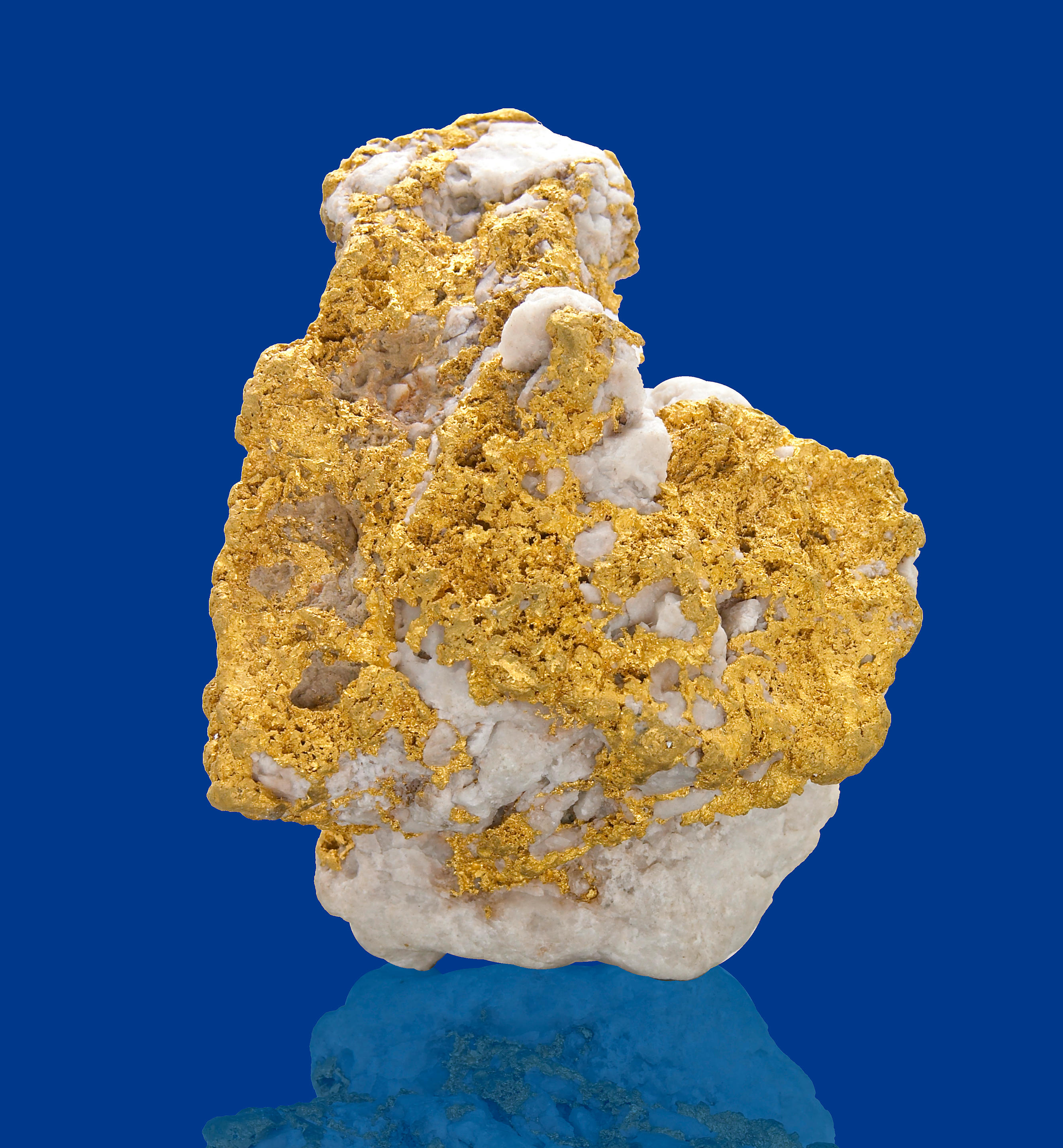
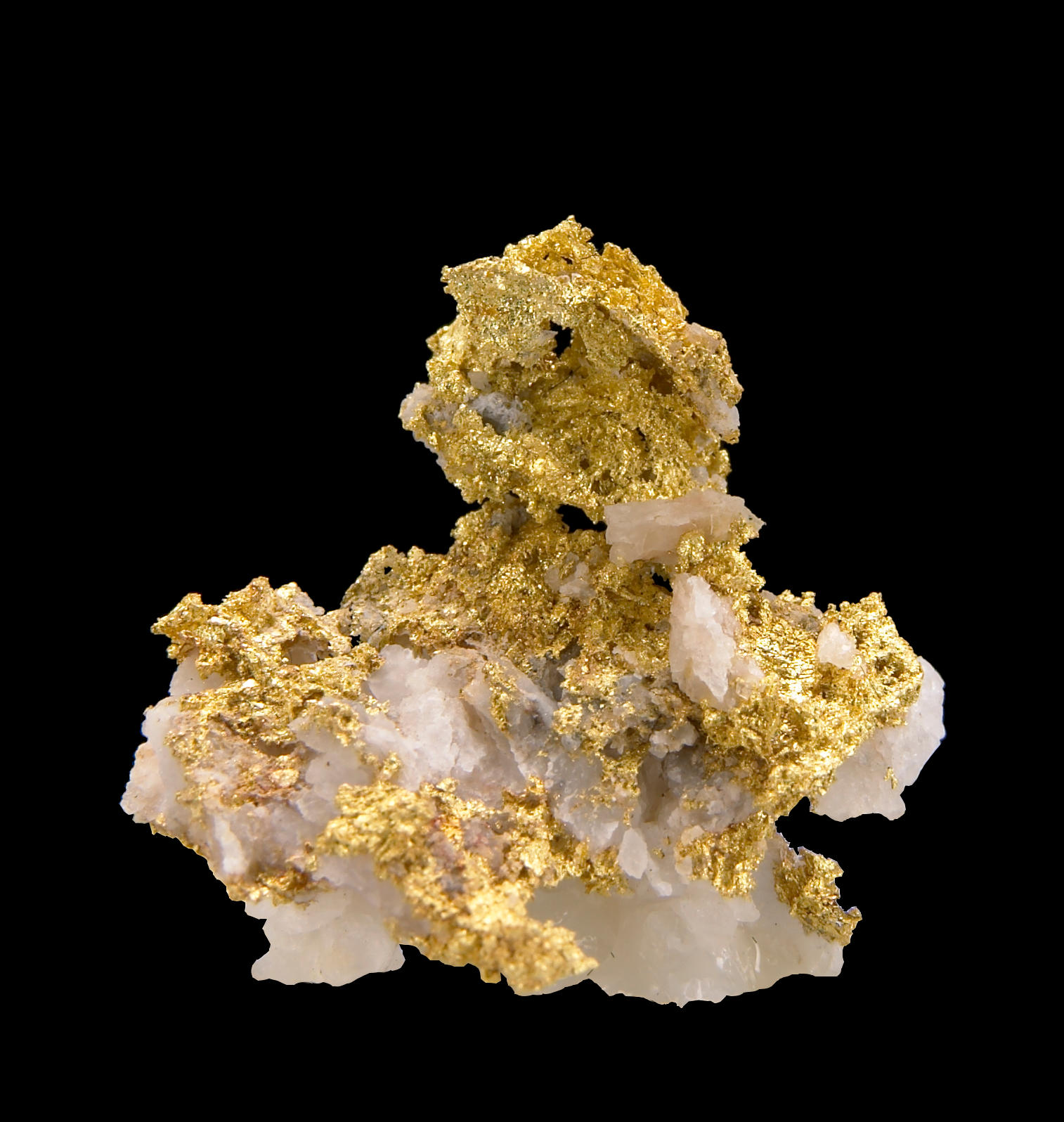




Testen Sie LotSearch und seine Premium-Features 7 Tage - ohne Kosten!
Lassen Sie sich automatisch über neue Objekte in kommenden Auktionen benachrichtigen.
Suchauftrag anlegen